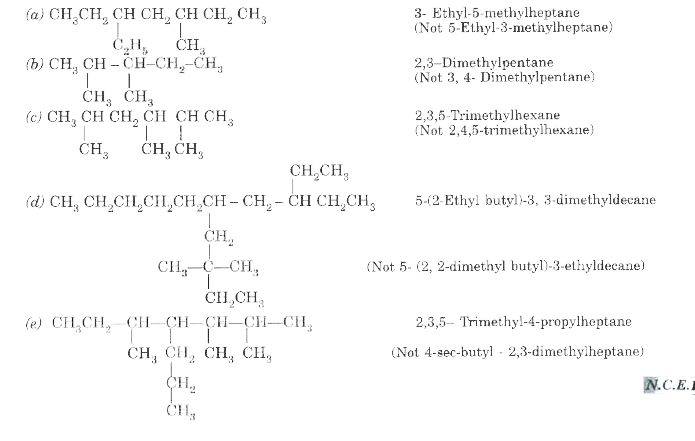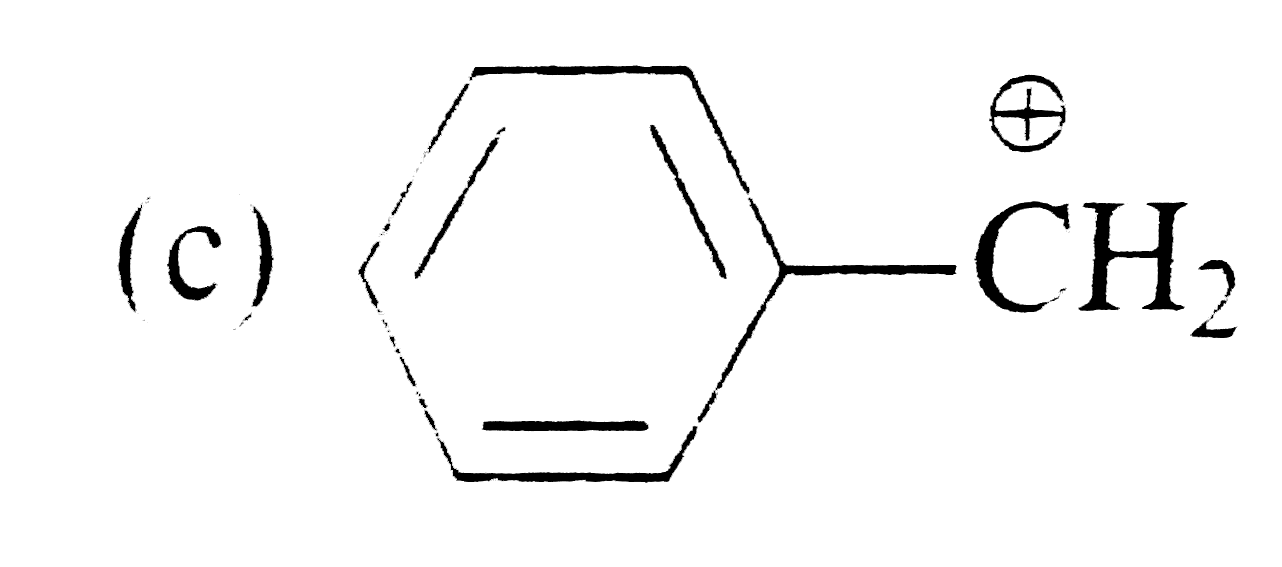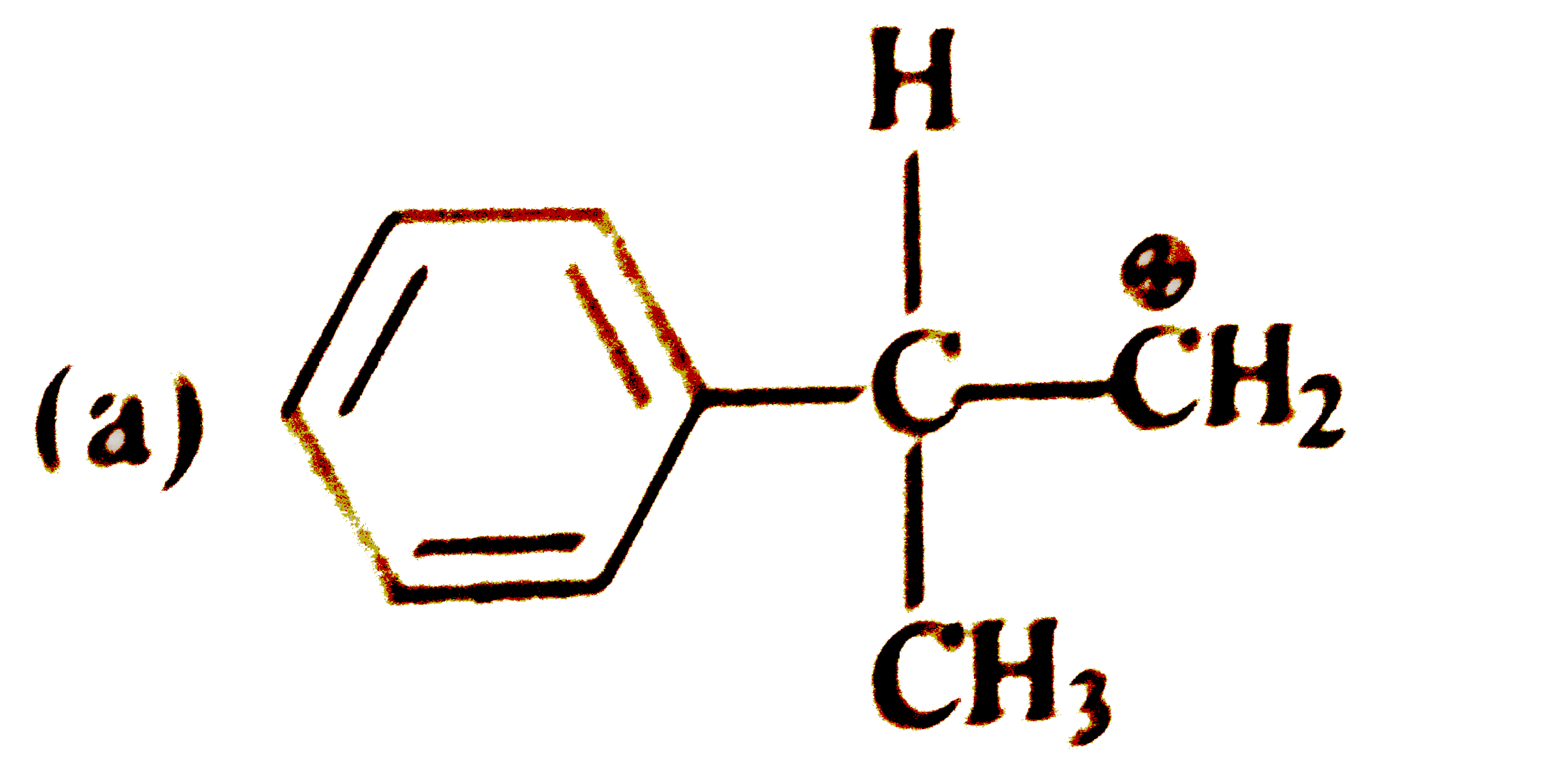The structure of triphenylmethyl cation is given below. This is very stable and some of its salts can be stored for months. Explain the cause of high stability of this cation.

In triphenyl methyl cation, three benzene rings are attached to the positively charged carbon atom. A number of conjugated structures are possible.

Therefore, triphenyl methyl cation is quite stable and is isolated in the solid state from its solution. some of its salts can be stored even for months.
(C6H5)3CCl⇐⇒(C6H5)3C⊕+Cl−Triphenyl methyl chlorideTriphenyl methyl cation (solid)
Topper's Solved these Questions
- BOOK - DINESH PUBLICATIONCHAPTER - ORGANIC CHEMISTRY - SOME BASIC PRINCIPLES & TECHNIOUESEXERCISE - CONCEPT BASED QUESTION45videos
ORGANIC CHEMISTRY - SOME BASIC PRINCIPLES & TECHNIOUES
- BOOK - DINESH PUBLICATIONCHAPTER - ORGANIC CHEMISTRY - SOME BASIC PRINCIPLES & TECHNIOUESEXERCISE - VALUE BASED QUESTION3videos
ORGANIC CHEMISTRY - SOME BASIC PRINCIPLES & TECHNIOUES
- BOOK - DINESH PUBLICATIONCHAPTER - ORGANIC CHEMISTRY - SOME BASIC PRINCIPLES & TECHNIOUESEXERCISE - N.C.E.R.T.40videos
ORGANIC CHEMISTRY - SOME BASIC PRINCIPLES & TECHNIOUES
- BOOK - DINESH PUBLICATIONCHAPTER - NUCLEAR AND RADIO CHEMISTRYEXERCISE - Evaluate Yourself45videos
NUCLEAR AND RADIO CHEMISTRY
- BOOK - DINESH PUBLICATIONCHAPTER - P BLOCK ELEMENTS (GROUP 13 AND 14 )EXERCISE - Straight obj.17videos
P BLOCK ELEMENTS (GROUP 13 AND 14 )
Similar Questions
Structures and names of some hydrocarbons are given below. Explain why the names given in parenthesis are not correct :
 View Solution
View SolutionPratap is a student of class IX in a city school. He has recently studied the writting of formulae of ionic compounds in the class. Pratap has made some placards for a science quiz showing the symbols of some elements and some ions but forgot to write the electric charges on the ions. Moreover, the placards made by Pratap got mixed up as shown below :

Based on these placards, the chemistry teacher, Mr. Suri, asked Pratap to answer the following question :
(a) Choose the symbol of the element from among the placards which can form divalent and trivalentcations. Name this element. Also write the symbols of these cations along with their charges
(b) Choose the symbol of a divalent anion from among the given placards. what is the name of this anion. Also write the symbol of this anion alongwith its charge
(c) Work out the formula of the ionic compound formed between the divalent cation and divalent anion described above. Also name the compound formed
(d) Work out the formula of the ionic compound formed between the trivalent cation and divalent anion described above. Also name the compound formed
(e) What values are displayed by Pratap in this episode ?View Solution
Knowledge Check
- Question 1 - Select One
In which of the following cations rearrangement takes place?
A B
B C
C D
D
- Question 2 - Select One
Under common reaction conditions, a carboncation rearranges to another carbocation of equal or greater stability. For example secondary carbocation will rearrange to a tertiary carbocation. It will not rearrange to a less stable primary carbocation. This generalization is not absolute, and because there is not is a high energy barrier to the rearrangement of carbocations, rearrangement to a less stable cation can occur if it offers the chance to forme a more stable product.
In which of the following cations rearrangement takes place most rapidly?A BCH3H∣C∣CH3−⊕CH2C
BCH3H∣C∣CH3−⊕CH2C D
D
- Question 3 - Select One
Under common reaction conditions, a carboncation rearranges to another carbocation of equal or greater stability. For example secondary carbocation will rearrange to a tertiary carbocation. It will not rearrange to a less stable primary carbocation. This generalization is not absolute, and because there is not is a high energy barrier to the rearrangement of carbocations, rearrangement to a less stable cation can occur if it offers the chance to forme a more stable product.
In the following cation , H/CH3 that is most likely to migarte to the positively charged carbon is :
H3C1−2H∣C∣OH−3⊕C∣H−4H∣C∣CH3−5CH3ACH3atC−4BHatC−4CCH3atC−2DHatC−2
A practical examination was being conducted for the students. The examiner, in the viva asked Julie the question 'Two salts X and Y are given to you. Salt 'X' is obtained by treating potassium with oxyacid of a non- metal with suffix 'ic' which has seven electrons in the 'M' shell which is the valence shell. Salt 'Y' is formed between lead and oxyacid of a non-metal with five electrons in its valence 'L' shell. Both the salts can give oxygen on thermal decomposition. Which salt do you prefer for the preparation of pure oxygen and why ? When she answered the question correctly, examiner was very much impressed and awarded her full marks. What was the answer that Julie gave ?
View SolutionThe question below consists of a set of labelled sentences. Out of the four options given, select the most logical order of the sentences to form a coherent paragraph.
Deforestation is already held to have
P. areas and its continuation would
Q. lead to further ecological disasters
R. caused irreversible damage in someView SolutionThe electronic displacements in covalent bonds may occur either in the ground state under the influence of an atom or a substituent group or in presence of an appropriate attacking reagent. As a result of these electron displacements, centres of different electron densities are created and these centres are susceptible to attack by the reagents. These electron displacements occur through inductive electromeric, resonance and hyperconjugation effects. Whereas inductive effect involves displacement of σ-electrons towards the substituent, resonance effect involves delocalization of π−electrons transmitted through the chain and both are permanent effect. Electromeric effect is the complete transfer of a shared pair of π- electrons to one of the atoms joined by a multiple bond on the demand of an attacking reagent. Hyperconjugation effects on the other hand involve delocalization of σ-electrons of C−H bond of an alkyl group directly attached to an atom of unsaturated system (i.e., σ−π-conjugation). Both inductive and hyperconjugation effects can be used to explain the stability of carbocations and free radicals which follow the stability order : 3∘>2∘>1∘. The stability or carbanions, however, follows the reverse order.
An organic reaction occurs through making and breaking of bonds. The breaking of a covalent bond may occur either homolytic leading to the formation of free radicals or heterolytic forming positively (carbocations) or negatively (carbanions) charged species. Most of the attacking reagents carry either a positive or a negative charge. The positively charged species with electron deficient centre or neutral species (free radicals, carbenes, nitrene) are collectively called electrophiles, while negatively charged species with electron rich centre or neutral species (like water, alcohol, ammonia, etc.) are called nucleophiles.
Which of the following is most stable cation?View SolutionThe stability of complexes depends upon stability constant. Higher the value of stability constant, more will be stability of complex. It can also be determined with the help of dissociation constant. Higher the value of dissociation constant, lesser will be stability. Smaller cation, with higher charge can form more stable complex. Stronger the ligand, more stable will be complex. Polydentate ligands form more stable complex than unidentate ligand. If multidentate ligand is cyclic, it further increases the stability, it is called macrocyclic effect.
Which of the following is most stable?View SolutionThe stability of complexes depends upon stability constant. Higher the value of stability constant, more will be stability of complex. It can also be determined with the help of dissociation constant. Higher the value of dissociation constant, lesser will be stability. Smaller cation, with higher charge can form more stable complex. Stronger the ligand, more stable will be complex. Polydentate ligands form more stable complex than unidentate ligand. If multidentate ligand is cyclic, it further increases the stability, it is called macrocyclic effect.
Which of the following is called Wilkinson's catalyst?View Solution

